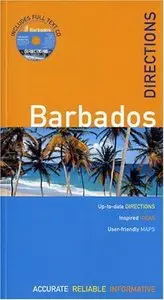The Rough Guides' Barbados Directions By Adam Vaitilingam, Rough Guides
Publisher: Rough Guides 2004 | 208 Pages | ISBN: 1843533200 | PDF | 3 MB
Publisher: Rough Guides 2004 | 208 Pages | ISBN: 1843533200 | PDF | 3 MB
Pulling in Caribbean first-timers and experienced travellers in equal measure, Barbados is justifiably one of the most popular islands in the region. Certain pleasures are quite obvious – the delightful climate, the gorgeous blue sea and brilliant white sandy beaches – but an engaging blend of cultures and a balanced approach to development help set it apart from similar sun-drenched destinations. For more than three centuries Barbados was a British colony and, perhaps unsurprisingly, it retains something of a British feel: the place names, the cricket, horse-racing and polo, Anglican parish churches and even a hilly district known as Scotland. But the Britishness can be exaggerated, for this is a distinctly West Indian country, covered by a patchwork of sugarcane fields and dotted with tiny rum shops. Calypso is the music of choice, flying fish the favoured food, and influences are as likely to emanate from America as from Europe. Meanwhile the people of Barbados, known as Bajans, are as warm and welcoming as you’ll find anywhere. Among the more traditional attractions are the island’s evocative plantation houses, colourful botanical gardens, and proud military forts and signal stations. The capital Bridgetown makes for a lively place to visit, with an excellent national museum and great nightlife in its bars and clubs. Then there are the beaches, from the often-crowded strips such as Accra Beach and Mullins Bay to tiny but superb patches of palm-fringed sand like Bottom Bay in the southeast. And all around the island you can find first-rate food and drink; particularly delightful are the many bars and restaurants that overlook the ocean. Despite the hordes of visitors who descend on the island, development has mostly been discreet, with many of the facilities owned by Bajans, and a distinct lack of private beaches or signs of the American fast-food franchises that blight other islands in the region. Admittedly, there are areas on both the south and west coasts where tourism is utterly dominant and Bajans massively outnumbered by European and American visitors. But, if you want to, it’s easy to get away from it. Jump in a bus or a rental car and see the rest of the island: the sugar-growing central parishes, the thinly populated and little-explored north, and the ruggedly beautiful east coast, where you can hike for miles along the beach with only sea birds and the occasional surfer in sight.



